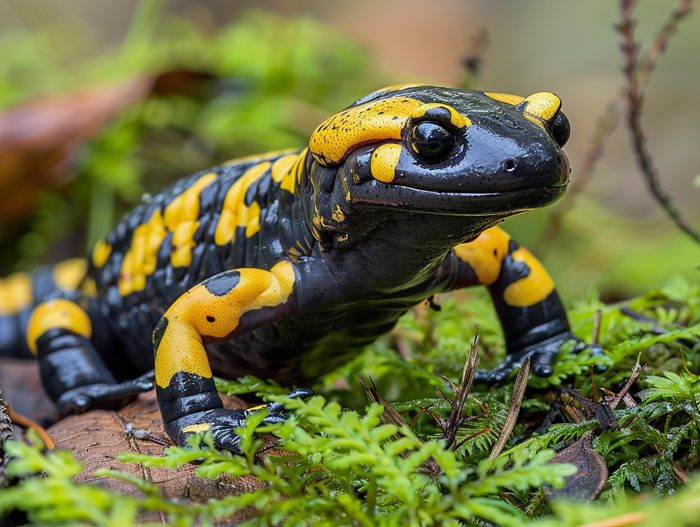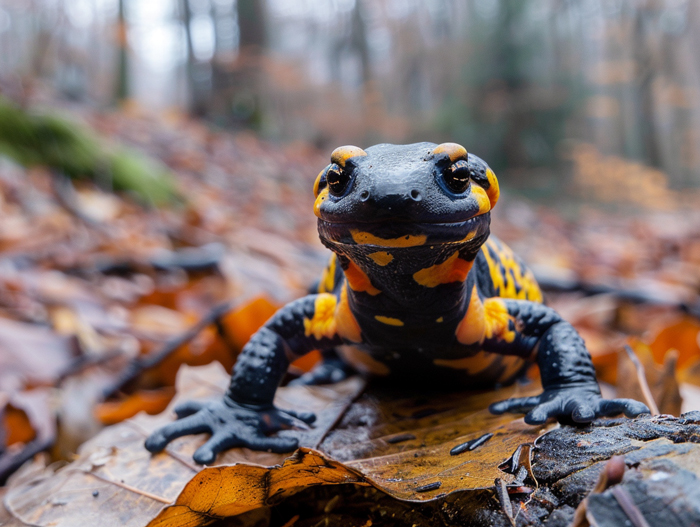Curious about whether salamanders make noise? You’re not alone. These fascinating creatures have a mysterious allure, and their vocal abilities are no exception. In this text, we’ll jump into the world of salamanders and explore whether they have a voice.
While some animals are known for their loud calls or melodic songs, salamanders tend to be more discreet. But that doesn’t mean they’re completely silent. From subtle rustling sounds to soft chirps, salamanders have their ways of communicating. Let’s uncover the truth behind these elusive amphibians and their unique vocalizations.
Key Takeaways
- Salamanders, although not known for loud calls, do produce sounds like subtle rustling and soft chirps for communication.
- There are over 600 species of salamanders worldwide, varying in size and inhabiting diverse environments like forests, caves, and mountains.
- Salamanders communicate using pheromones, visual cues, and vocalizations to attract mates, establish territories, and warn off predators.
- Vocalizations play essential roles for salamanders in mating calls, territory defense, and alarm signals, contributing to their survival and behavior strategies.
Do Salamanders Make Noise

Understanding Salamanders
- Salamanders are amphibians known for their sleek bodies, distinct tails, and moist skin.
- They belong to the order Caudata and are often found near bodies of water.
- Salamanders have four main toes on their front legs and five on their back legs.
Types of Salamanders
- There are more than 600 species of salamanders worldwide.
- These creatures vary in size, with some as small as 2 inches and others reaching lengths of over 5 feet.
- Salamanders can live in diverse habitats such as forests, caves, and mountains.
- While not as loud as some other animals, salamanders do produce sounds for communication.
- Salamander vocalizations range from subtle rustling to soft chirps.
- These beings use sounds to attract mates, establish territory, and warn off predators.
Transitioning to the next section without a conclusion provides a seamless flow of information about salamanders and their intriguing vocal abilities.
How Do Salamanders Communicate?

Chemical Communication
- Salamanders use pheromones to communicate with others.
- Pheromones are chemical signals that convey messages about mating, territory, or warning signs.
- These chemical signals are detected through the vomeronasal organ located in the roof of their mouth.
Visual Communication
- Body movements and color changes play a vital role in salamander communication.
- They use visual cues to display aggression, submission, or mating interest.
- Bright colors may signal toxicity in some species, serving as a warning to predators.
- While not as vocal as other animals, some salamanders produce sounds to communicate.
- Salamanders may emit chirps or rustling sounds to attract mates or deter predators.
- These acoustic signals are crucial for establishing territories and finding mates in their environment.
The Importance of Salamander Vocalizations

Mating Calls
When it comes to mating, salamanders use vocalizations to attract potential partners. These calls are crucial in establishing connections and finding mates in their environment. Male salamanders often produce chirps and rustling sounds to signal their presence and availability to females, playing a pivotal role in the reproduction process.
Territory Defense
Salamander vocalizations also play a significant role in Territory Defense. By emitting sounds, salamanders can establish and maintain their territories, warding off potential intruders and deter predators. These vocal signals serve as warnings to neighboring salamanders and other creatures, helping them avoid conflicts and maintain their defined areas for survival.
Alarm Calls
In times of danger, salamanders rely on Alarm Calls to alert others in the vicinity. These vocalizations are crucial for signaling threats and mobilizing responses within the salamander community. By emitting specific sounds during threatening situations, salamanders can communicate effectively and ensure the safety of themselves and their fellow species members.
By understanding the varied roles that vocalizations play in the lives of salamanders, we gain insight into the complex communication systems of these fascinating creatures. From mating rituals to territorial disputes and emergency situations, vocal signals form an integral part of salamander behavior and survival strategies.
Conclusion
Now you know that salamanders use vocalizations as a key component of their communication repertoire. By emitting chirps and rustling sounds, these amphibians convey important messages related to mating, territorial boundaries, and potential threats. These vocal signals play a vital role in their survival and social interactions. Understanding how salamanders communicate through sound sheds light on the complexity of their behavioral patterns and adaptive strategies. Next time you encounter a salamander in the wild, remember, its subtle vocalizations are a crucial part of its communication toolkit.

Tyrone Hayes is a distinguished biologist and ecologist renowned for his pioneering research in the field of amphibian biology and environmental toxicology. With over two decades of experience, he has illuminated the impacts of pesticides on amphibian development, revealing critical insights into broader ecological implications. Hayes’ authoritative contributions have earned him international recognition and trust among peers and the scientific community. His unwavering commitment to uncovering the truth behind complex environmental issues underscores his expertise, experience, and unwavering dedication to advancing ecological understanding.
